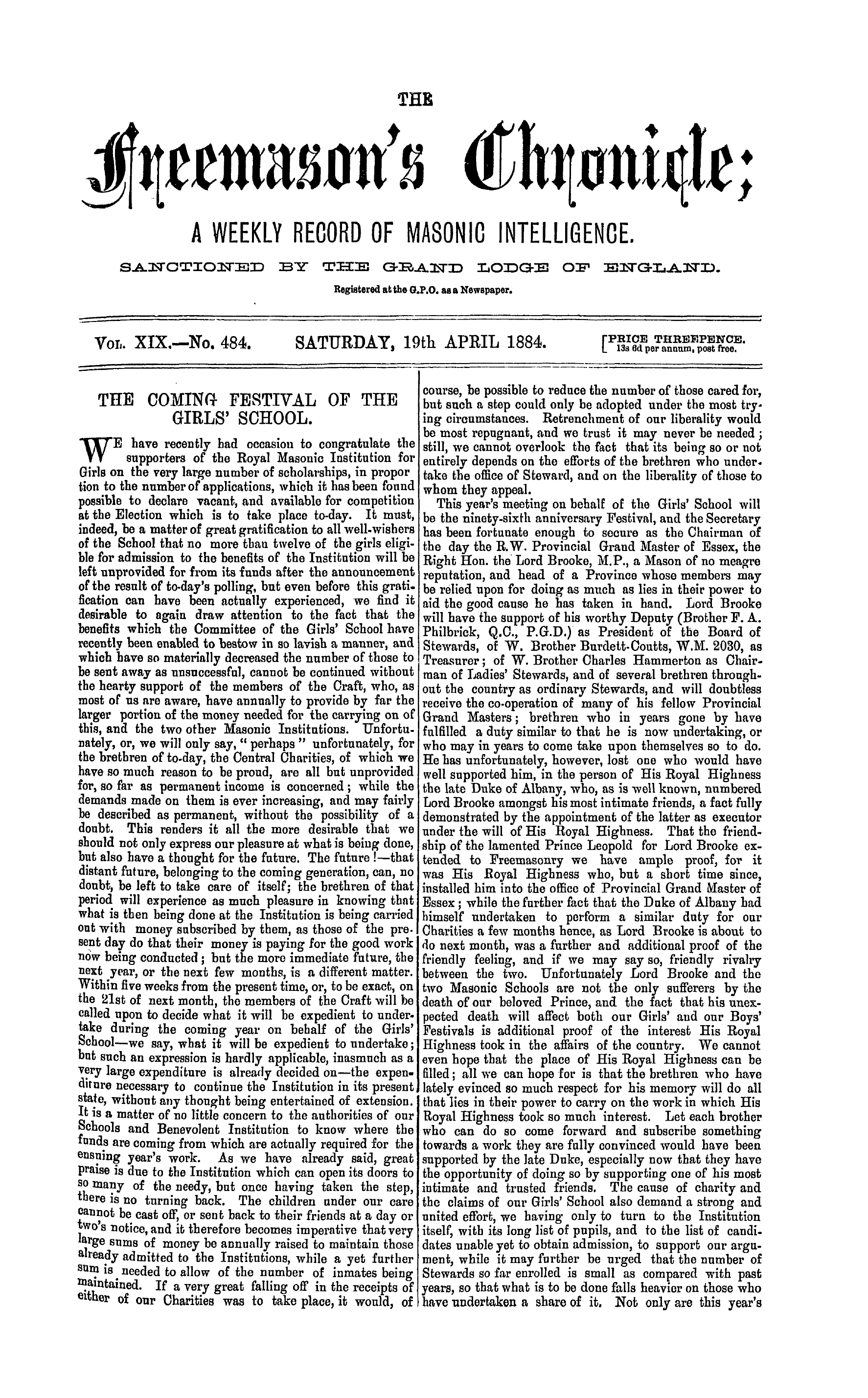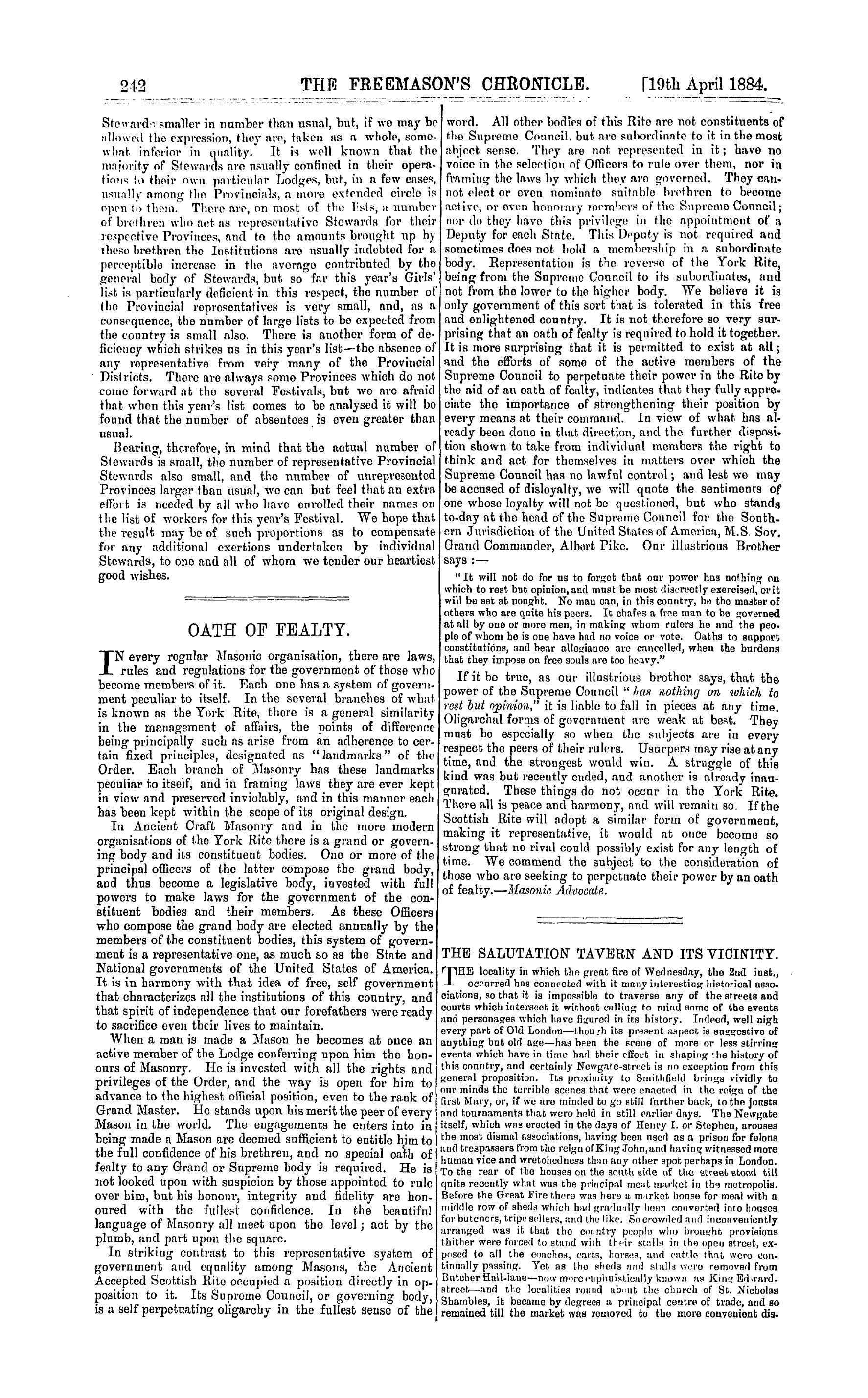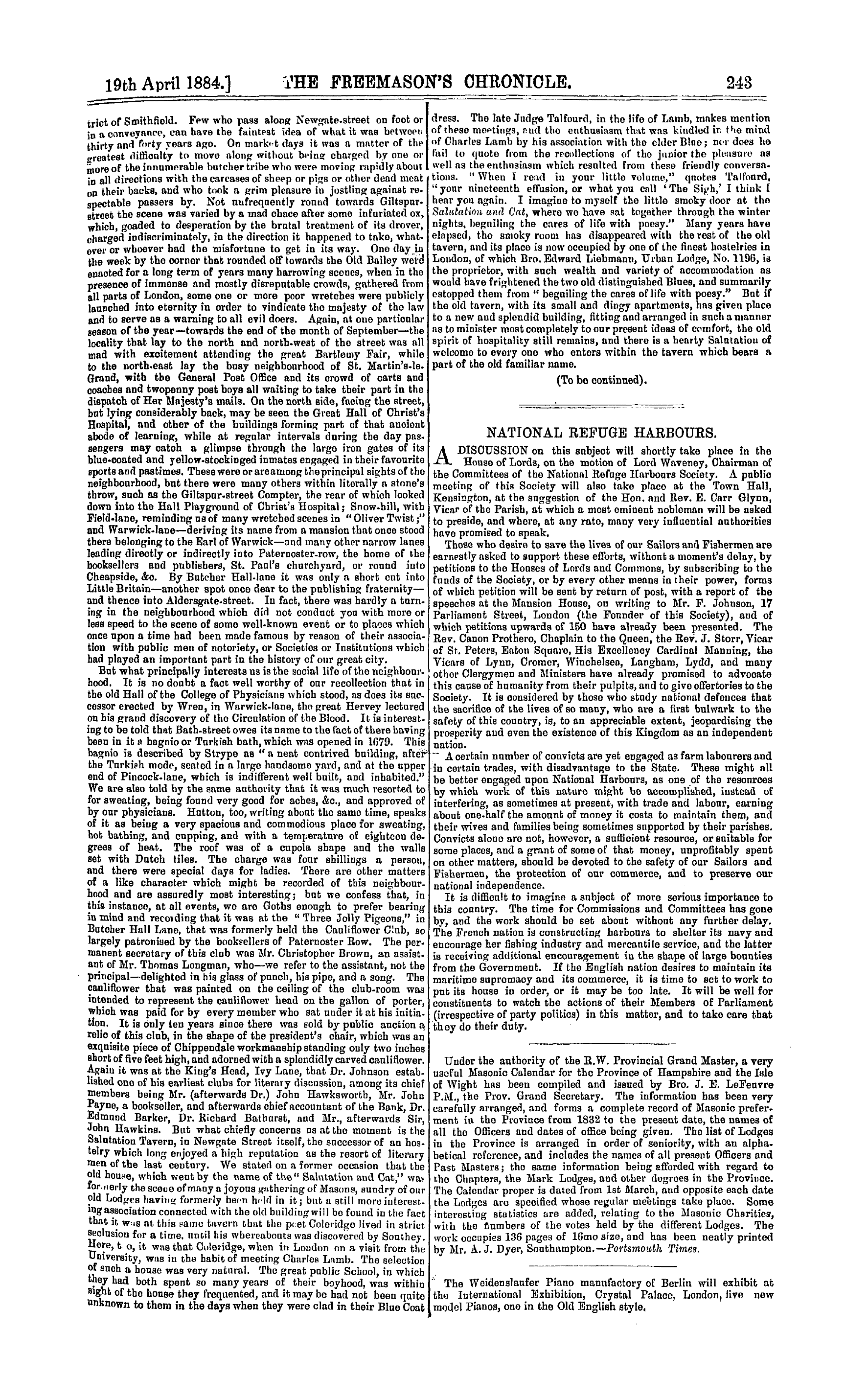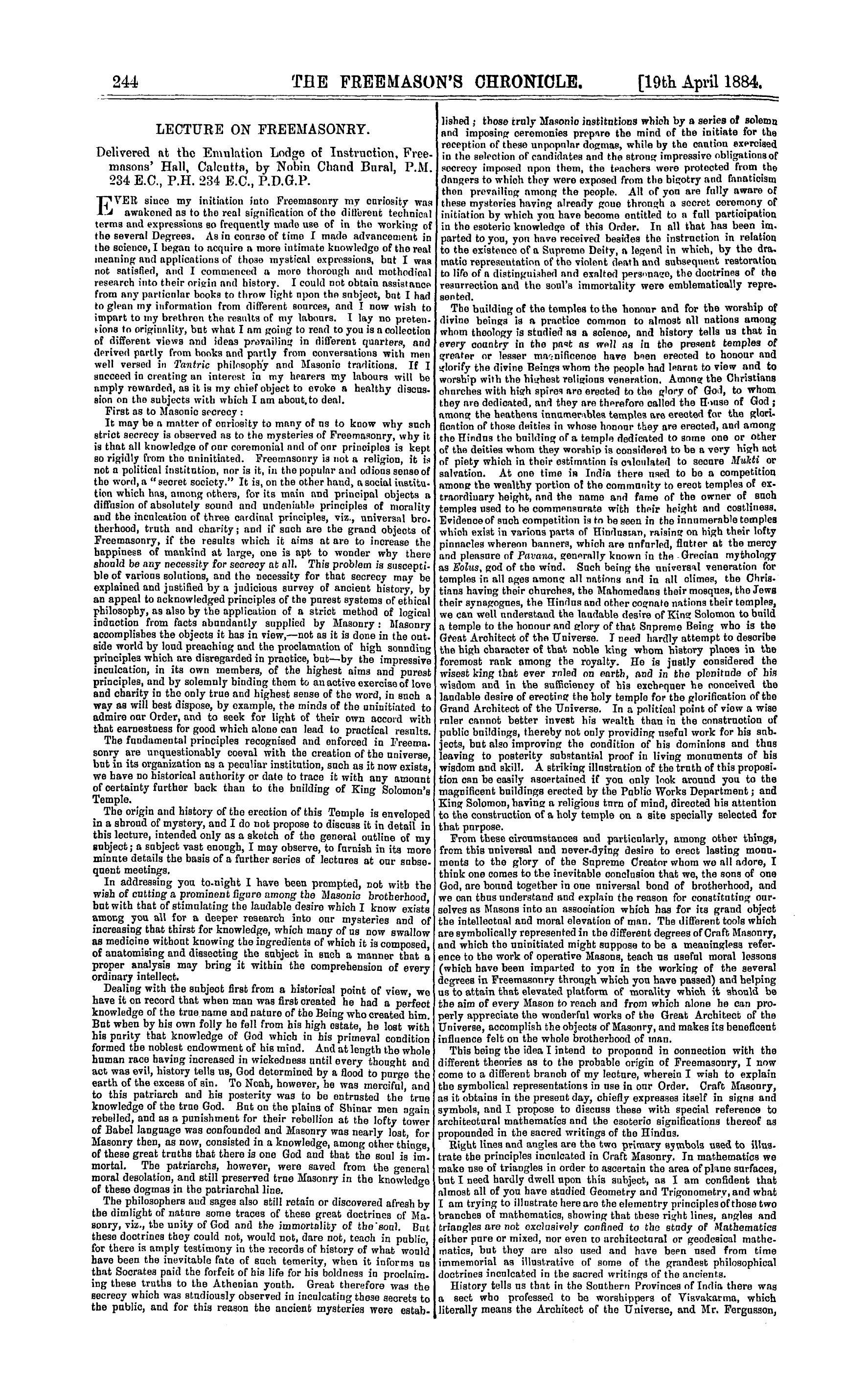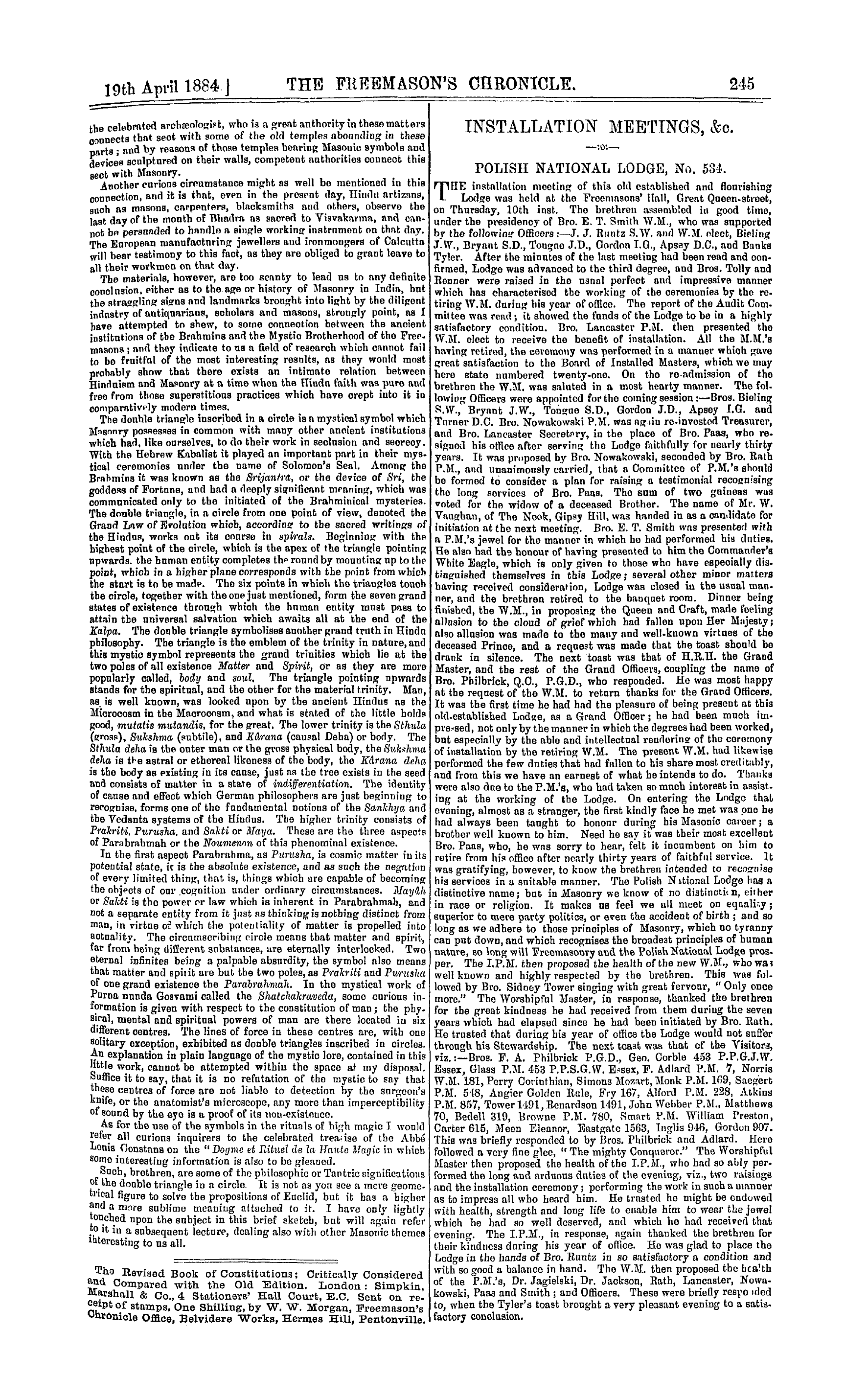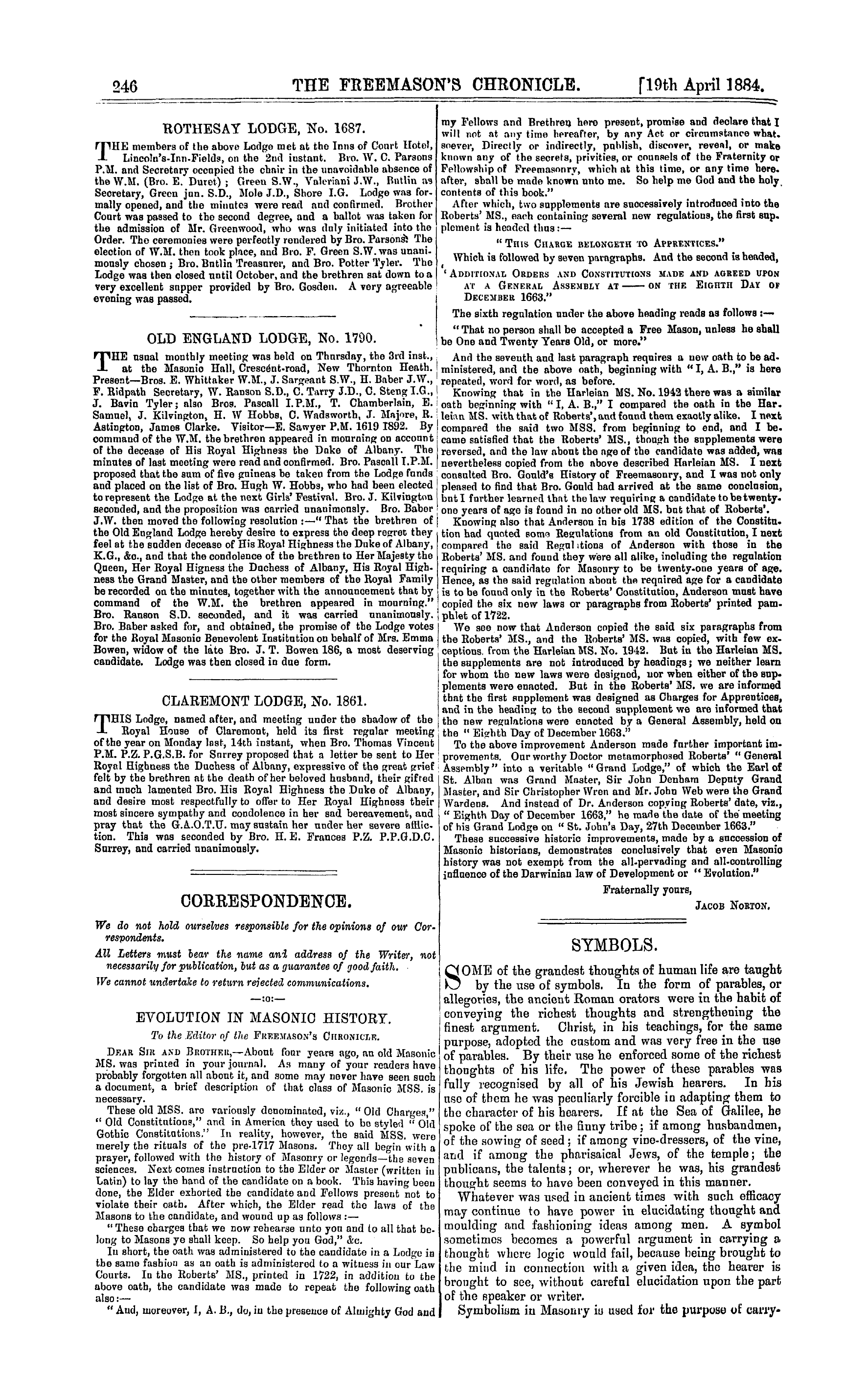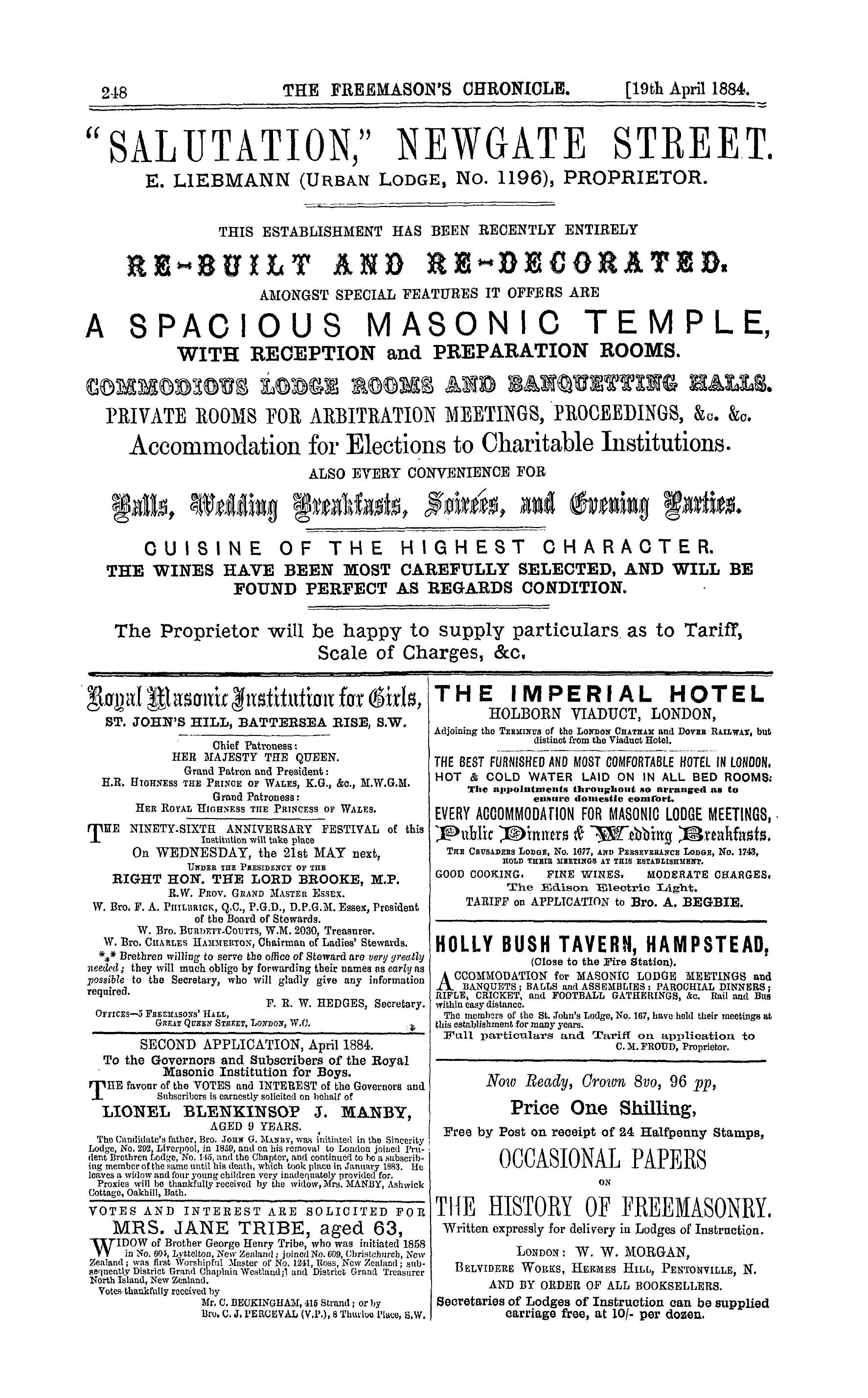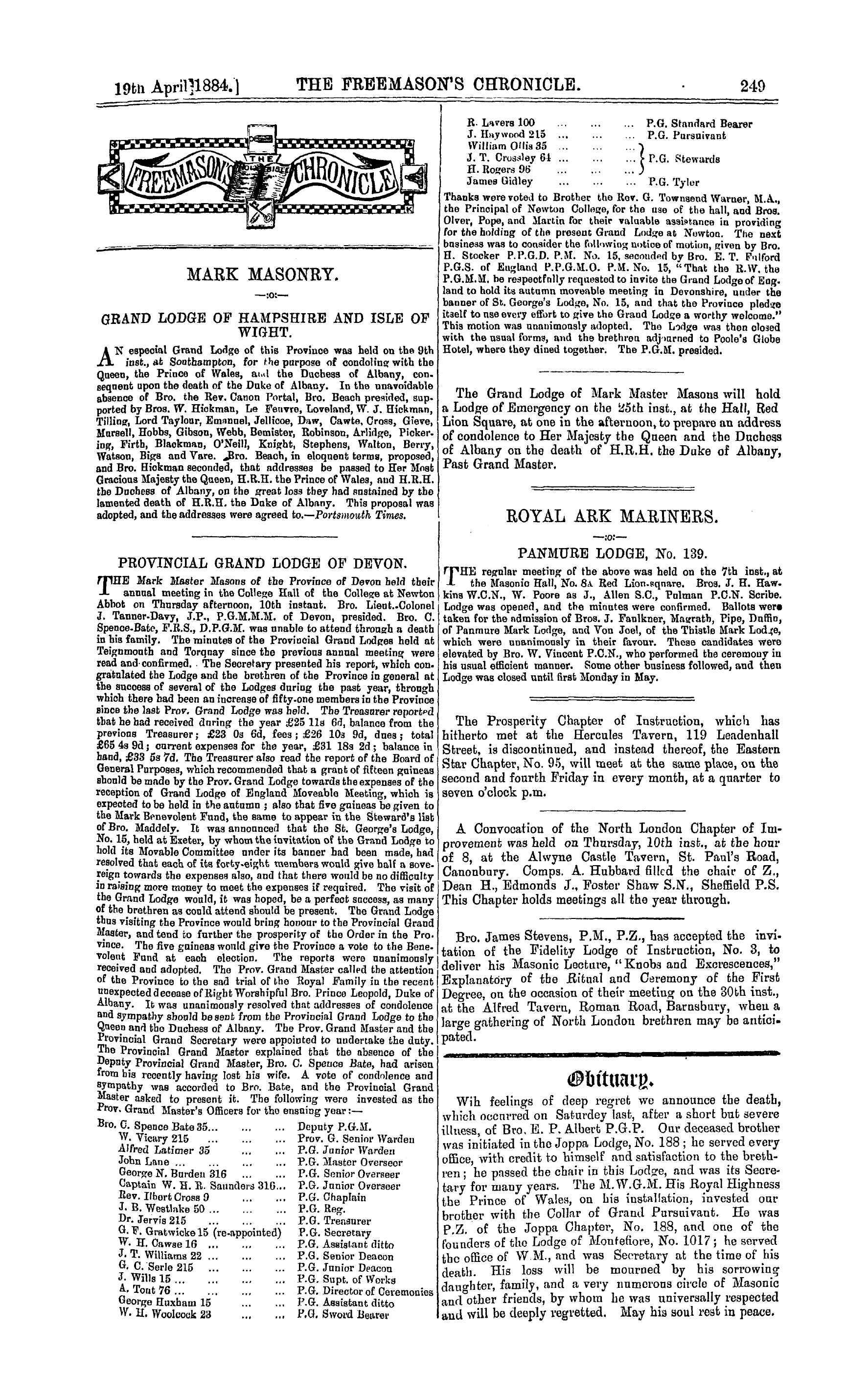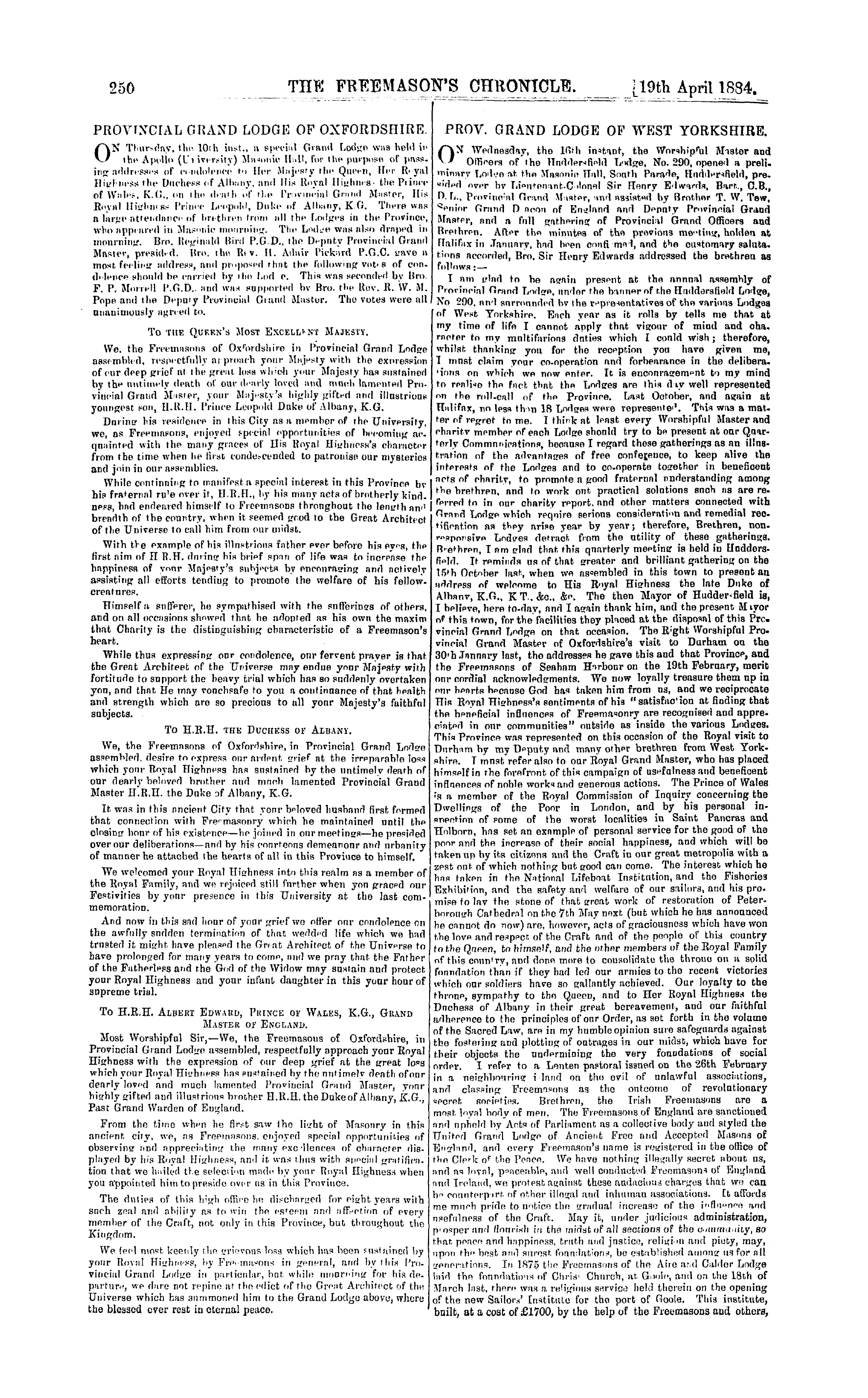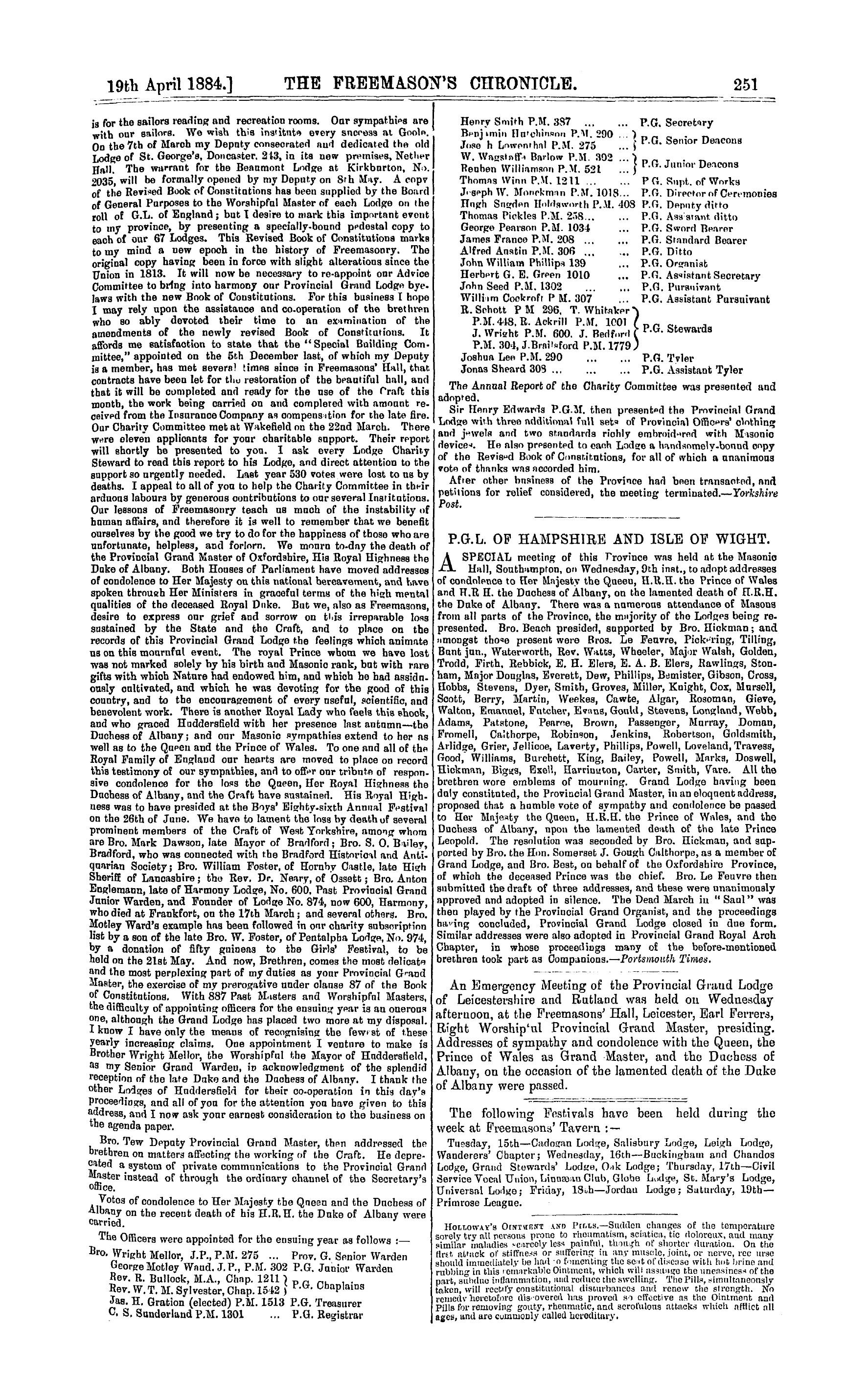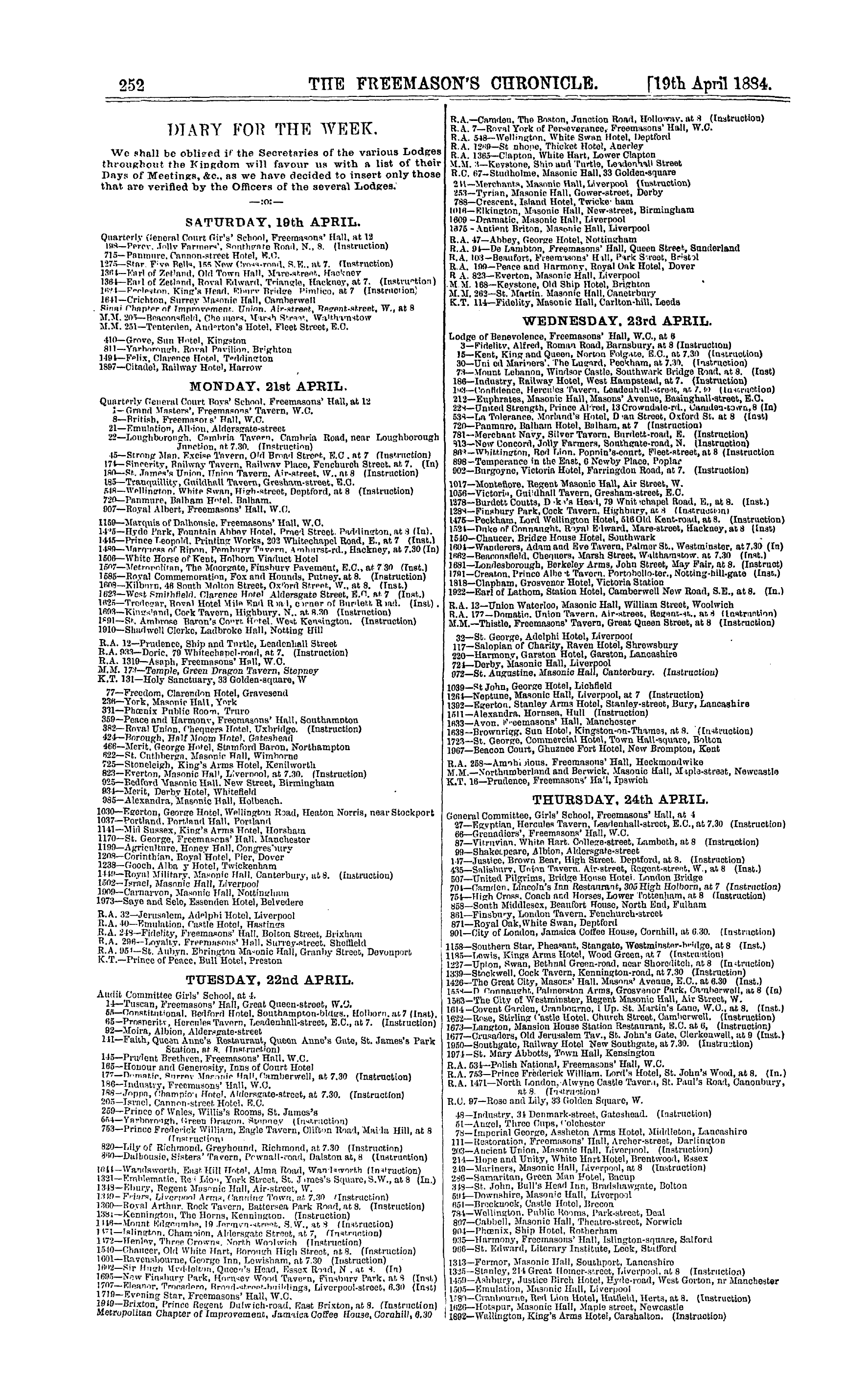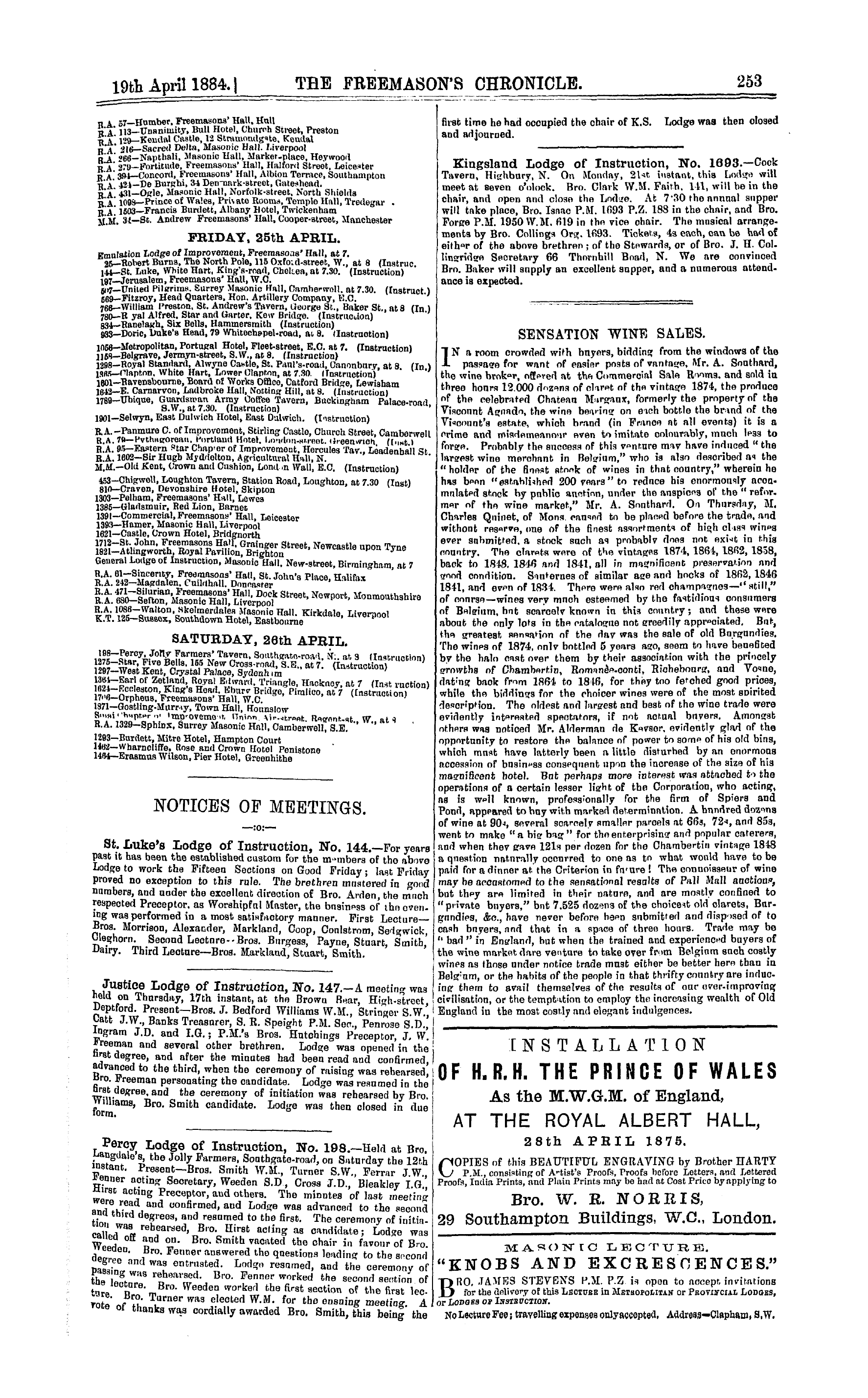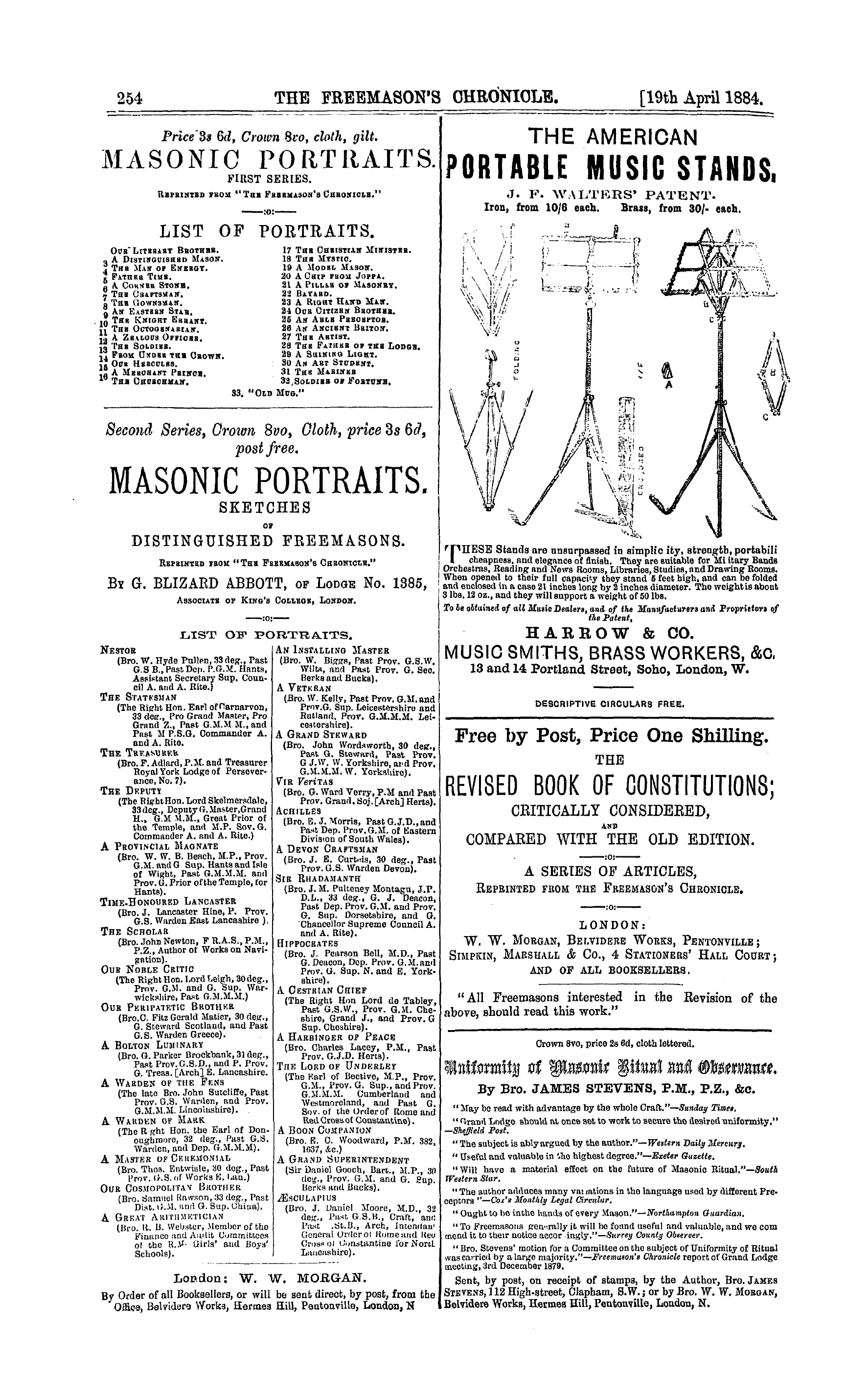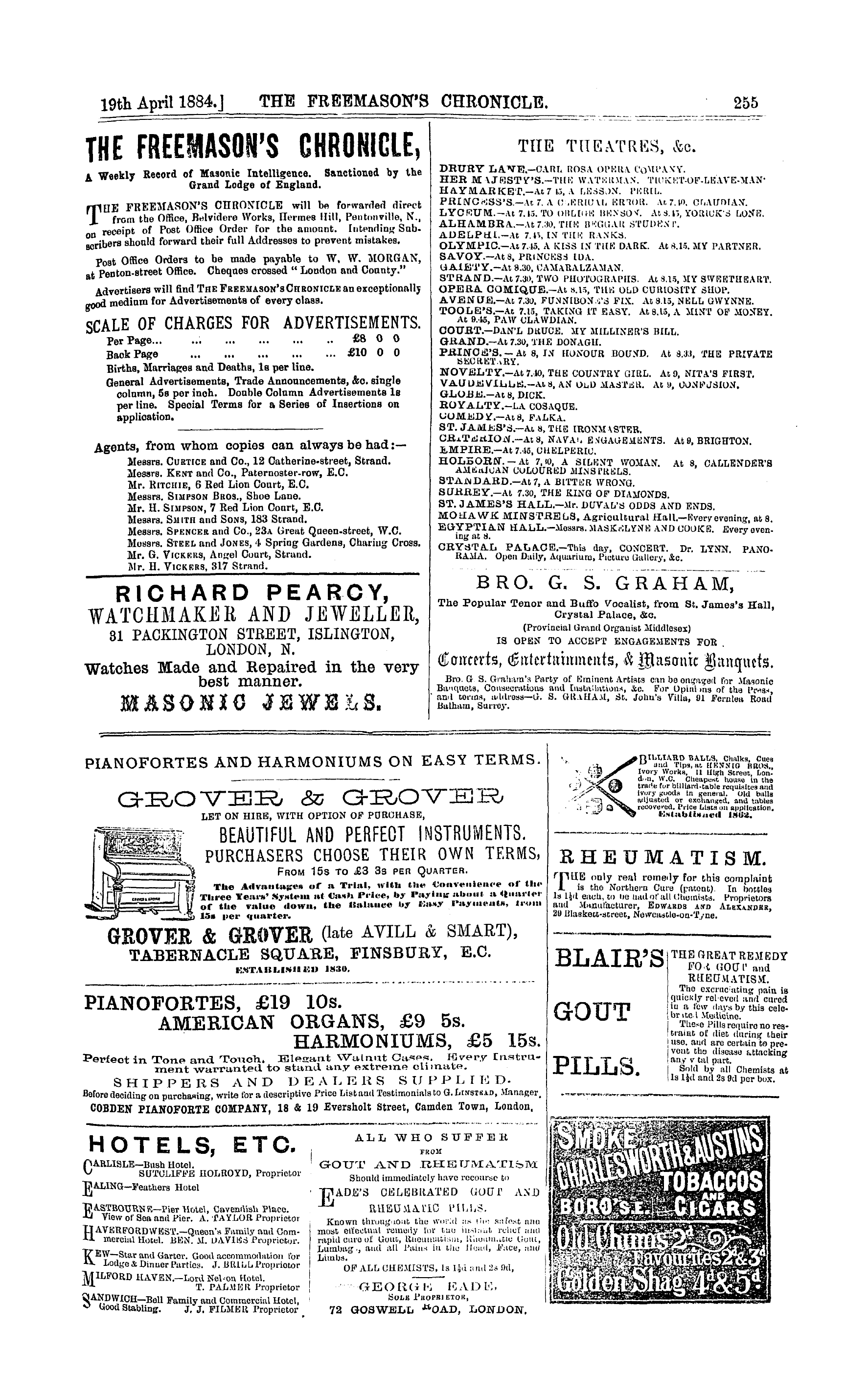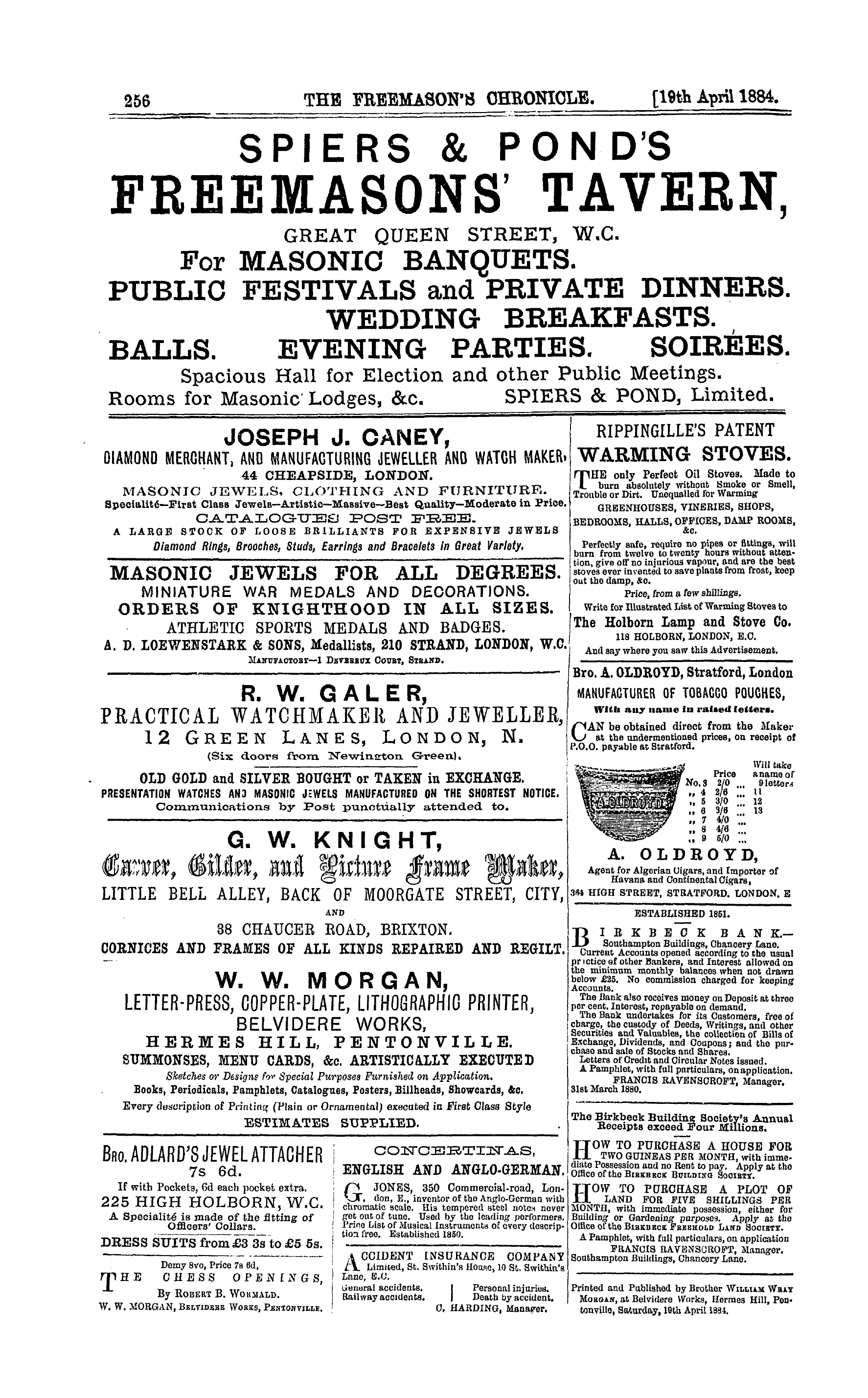Note: This text has been automatically extracted via Optical Character Recognition (OCR) software.
Symbols.
irjo- the grandest thought to the minds and hearts of men . By its nse wo roach tho mind iu a way not only appropriate , but with tho greatest force . In the initiation into anV degree there wonld bo no time for argument or a long
address upon a man ' s duty to himself , nor to his neighbour ; but to demand a penny in tho moment when he is entirely bereft of every valuable thing leaves an impression upon his mind that , can never be eradicated .
We do not propose , in our few articles upon this subject , to be very elaborate , nor to enter to any great extent npon the origin of the many Masonic symbols , but as far as possible to draw from them the teachings which ought to he very dear to Masonic hearts .
Our readers aro all aware that thero is great carelessness upon tho part of Masons generall y upon this point . Few of us stop to ponder on tho value of symbolic teaching . The chart hangs in the Lodge-room as an ornament more than because of its great value as one of our most
important nnd powerful teachers ; yet it is fall of valuable lesions . Tho initiate hears tho lessons drawn from tho chirt , and regards it afterward with a marked degree of indifference . A proper attention to the signification of our symbols , and walking in the direction of their
teaching , would result m making all of ns better men . Let ns now , as wo look into this thought , try to learn something that will lead us into a higher type of life . In speaking of the value of our symbols we would not in any sense whatever depreciate the esoteric work , but we
must remember that both of these elements of Masonry have a work to perform . Neither is in the way of the other . They are co-partners in one great work . Theoretically , each should havo proper attention ; practically , the esoteric receives all , and the symbolical little or none .
Webster defines a symbol as " a sign by which one infers or knows a thing . " 1 . "The sign or representation of something moral or intellectual by the images or properties of natural things . " The last being the true idea of Masonic symbolism , it is the only portion of his extensive definition that wo need touch .
Masonry is " a science of morality , veiled in allegory and illustrated by symbols . " ( Mackey Sym . 71 . ) The great and powerful feature of Masonry is its teaching of moral principle ; bufc take away its symbols , by which these principles are brought to the mind , and we
have in a measure destroyed its chief power . Symbols to Masonry are what preaching is to Christianity , its chief method of imparting instruction and perpetuating principles . Because of its symbolism we need not relegate it to the mysteries of ancient heathenism , for the symbolic
science was not any more peculiar to the Chaldeans , Phoenicians , and Egyptians , than it was to the Jews . With the former ifc was their chief power , while with the Jews , faith in God was the power , and symbols the instru ment . We prefer to believe that if Masonry was , in any
airecfc sense , the product of any given nation , ifc was the result of an Association of Jews rather than any other , because in it at present are none of the remains of the former , while in the latter case we have the God idea fully developed in all its work , and because this God idea is
present in all its symbols . Beginning with childhood ' s teaching by symbols it increases in power through life , and iu rnahtrer years thero is more moral worth in the symbol than at any other period .
The brazen serpent was held up by the great evangelist as one of the grandest symbols of the saving power of the Hedeemer , and by that symbol perhaps many were brought to His knowled ge who would otherwise have failed in acquiring ifc .
SOLOMON ' TEMPLE . —The Masonic reference to Solomon ' s temple is more symbolical than real . The divisions were natural , each part being reserved and sanctified for a particular purpose . Br ginning with the highest , the Holy of -tfolies was for the dwelling of the Shekinahand for His
, Visible appearance to man ; the Holy Place , for the priests ho stood between God and man , ministering in holy , n gs ; the outer court , for the people , who received God ' s commands from the hands of the priests . So in the trini-Vlan
character of man wo havo the highest element , tho soul , which can cotmmme with God ; tho mind , as tie Sent between soul nnd body , becomes tho designing part man g nature , putting into form and shape the concejr "ons of the soul , while the body is the seat of all the baser Passions . Thus , without earring the thought further , ifc
Symbols.
is plain to see a beautiful symbolism in the temple a ; referring to man ' s trinitarian character . Mackey , in his " Symbolism of Masonry , " page 91 , says that the divisions of the workmen sit Solomon ' s Temple " have been adopted as the types of tho three degrees now
practised in Speculative Masonry , and constituted au im portant and interesting part of temple symbolism . " In tho physical sense this may be true , but there is another and highe / sense in which we are to consider tho temple as tho
theoretical foundation of Masonry . At tho time of its final completion it was thoroughly consecrated to God . That consecration meant setting apart all that belonged to ifc , even the minutest thine about it . So if we take the
temple in its symbolic light it means a great deal to Masons . The lesson we are to learn is that of our consecration to the service of God . This ii the teaching , but it is hardl y appreciated in all of its fulness . Not only is tho teaching true in a general way , but in the most minute sense . Take
tho thought of the temple symbolism and them follow it up through the first degree alone ; tho heart ; the divestment of valuable substances ; entering , duly prepared ; conducted by a blinded way , and by the hand of a friend into an unknown and unseen door : received
upon a point vital to the conscience ; trusting in God ; making a prayerful supplication ; asking for light ; bowing in sacred silence at an altar ; above the great lights of Masonry ; grasping the hand of friendship and brotherly love ; wearing the emblem of purity in the
white apron , with all its honours ; measuring our time by twenty-four inch gauge ; coming at the call of the gavel ; finding ourselves called upon for help in the absence of all ability to yield to the demand ; and so through all the
symbolisms , from the first of the Entered Apprentice to the last of the third degree , all tend to show that the symbolism of the temple means a giving np to God , and submitting to be led by Him through life .
Eealising the valuable teachings of Masonry , many say , " It is religion enough for me , " but of all who say this , and make it their boast , how very few there are who really serve God at all , but rather make ifc an excuse for doing nothing for His cause ! Ifc would seem that such was the
case because men generalise too much upon this temple symbolism and particularise too little . Now , it is plain , that when men have accepted such teaching ifc is
incumbent upon them to act as if they believed what they say they have accepted . There should bo no more need to impress Masons with their duty to God than to instruct Christians , because each class is expected to know duty .
Is the duty to God duly impressed upon us as we enter the Lodgo ? Are not all too neglectful of these great thoughts ? If we receive the teachings of such valuable symbolisms , and fail to impress them upon others , or carry
out their precepts in our own lives , are we not culpable before each other and accountable to God for such neglect ? These are momentous questions to Masons . Now , as we follow these thoughts separately , lot us see how nearly we fulfil our obligations to God .
The heart is not only the secret place of man ' s affections , bufc also theoretically the dwelling place of all the important truths or facts of life . Ifc shonld be pure and holy . All of its conceptions should bo right . Before we enter upon any important undertaking the
heart should be perfectly free and clear of all doubts and prejudices relating thereto . No man can be a perfect Christian without this consent ; neither can one enter fully into the work of a Mason without it . As upon entering upon the work of the Church wo are supposed
to engage in ifc with hearts purified from every stain , i o the symbol of the heart in Masonry indicates that wo were there first made a Mason : because there we first accepted the principles and doctrines that made as Masons . The heart is the symbolic word for tbe inner spiritual
nature ; the seat of God's communion with man ; fche conceiver of all good thoughts and evil designs , and the repository of all teachings , either good or bad . It is the essential eternal element of our nature that must render an account to God . How important , then , that it be pure
in all its conceptions and actions ! It answers to the symbolism of the temple Holy of Holies , the dwelling place of God . If Masonic symbolic teachings , then , are
directed to this essential eternal element , how careful we should be to keep its purity intact , and to be thoroughly prepared to give a good account of words , actions and thoughts when we meet in tho Grand Ludgc on High ! — Voice of Masonry .
Note: This text has been automatically extracted via Optical Character Recognition (OCR) software.
Symbols.
irjo- the grandest thought to the minds and hearts of men . By its nse wo roach tho mind iu a way not only appropriate , but with tho greatest force . In the initiation into anV degree there wonld bo no time for argument or a long
address upon a man ' s duty to himself , nor to his neighbour ; but to demand a penny in tho moment when he is entirely bereft of every valuable thing leaves an impression upon his mind that , can never be eradicated .
We do not propose , in our few articles upon this subject , to be very elaborate , nor to enter to any great extent npon the origin of the many Masonic symbols , but as far as possible to draw from them the teachings which ought to he very dear to Masonic hearts .
Our readers aro all aware that thero is great carelessness upon tho part of Masons generall y upon this point . Few of us stop to ponder on tho value of symbolic teaching . The chart hangs in the Lodge-room as an ornament more than because of its great value as one of our most
important nnd powerful teachers ; yet it is fall of valuable lesions . Tho initiate hears tho lessons drawn from tho chirt , and regards it afterward with a marked degree of indifference . A proper attention to the signification of our symbols , and walking in the direction of their
teaching , would result m making all of ns better men . Let ns now , as wo look into this thought , try to learn something that will lead us into a higher type of life . In speaking of the value of our symbols we would not in any sense whatever depreciate the esoteric work , but we
must remember that both of these elements of Masonry have a work to perform . Neither is in the way of the other . They are co-partners in one great work . Theoretically , each should havo proper attention ; practically , the esoteric receives all , and the symbolical little or none .
Webster defines a symbol as " a sign by which one infers or knows a thing . " 1 . "The sign or representation of something moral or intellectual by the images or properties of natural things . " The last being the true idea of Masonic symbolism , it is the only portion of his extensive definition that wo need touch .
Masonry is " a science of morality , veiled in allegory and illustrated by symbols . " ( Mackey Sym . 71 . ) The great and powerful feature of Masonry is its teaching of moral principle ; bufc take away its symbols , by which these principles are brought to the mind , and we
have in a measure destroyed its chief power . Symbols to Masonry are what preaching is to Christianity , its chief method of imparting instruction and perpetuating principles . Because of its symbolism we need not relegate it to the mysteries of ancient heathenism , for the symbolic
science was not any more peculiar to the Chaldeans , Phoenicians , and Egyptians , than it was to the Jews . With the former ifc was their chief power , while with the Jews , faith in God was the power , and symbols the instru ment . We prefer to believe that if Masonry was , in any
airecfc sense , the product of any given nation , ifc was the result of an Association of Jews rather than any other , because in it at present are none of the remains of the former , while in the latter case we have the God idea fully developed in all its work , and because this God idea is
present in all its symbols . Beginning with childhood ' s teaching by symbols it increases in power through life , and iu rnahtrer years thero is more moral worth in the symbol than at any other period .
The brazen serpent was held up by the great evangelist as one of the grandest symbols of the saving power of the Hedeemer , and by that symbol perhaps many were brought to His knowled ge who would otherwise have failed in acquiring ifc .
SOLOMON ' TEMPLE . —The Masonic reference to Solomon ' s temple is more symbolical than real . The divisions were natural , each part being reserved and sanctified for a particular purpose . Br ginning with the highest , the Holy of -tfolies was for the dwelling of the Shekinahand for His
, Visible appearance to man ; the Holy Place , for the priests ho stood between God and man , ministering in holy , n gs ; the outer court , for the people , who received God ' s commands from the hands of the priests . So in the trini-Vlan
character of man wo havo the highest element , tho soul , which can cotmmme with God ; tho mind , as tie Sent between soul nnd body , becomes tho designing part man g nature , putting into form and shape the concejr "ons of the soul , while the body is the seat of all the baser Passions . Thus , without earring the thought further , ifc
Symbols.
is plain to see a beautiful symbolism in the temple a ; referring to man ' s trinitarian character . Mackey , in his " Symbolism of Masonry , " page 91 , says that the divisions of the workmen sit Solomon ' s Temple " have been adopted as the types of tho three degrees now
practised in Speculative Masonry , and constituted au im portant and interesting part of temple symbolism . " In tho physical sense this may be true , but there is another and highe / sense in which we are to consider tho temple as tho
theoretical foundation of Masonry . At tho time of its final completion it was thoroughly consecrated to God . That consecration meant setting apart all that belonged to ifc , even the minutest thine about it . So if we take the
temple in its symbolic light it means a great deal to Masons . The lesson we are to learn is that of our consecration to the service of God . This ii the teaching , but it is hardl y appreciated in all of its fulness . Not only is tho teaching true in a general way , but in the most minute sense . Take
tho thought of the temple symbolism and them follow it up through the first degree alone ; tho heart ; the divestment of valuable substances ; entering , duly prepared ; conducted by a blinded way , and by the hand of a friend into an unknown and unseen door : received
upon a point vital to the conscience ; trusting in God ; making a prayerful supplication ; asking for light ; bowing in sacred silence at an altar ; above the great lights of Masonry ; grasping the hand of friendship and brotherly love ; wearing the emblem of purity in the
white apron , with all its honours ; measuring our time by twenty-four inch gauge ; coming at the call of the gavel ; finding ourselves called upon for help in the absence of all ability to yield to the demand ; and so through all the
symbolisms , from the first of the Entered Apprentice to the last of the third degree , all tend to show that the symbolism of the temple means a giving np to God , and submitting to be led by Him through life .
Eealising the valuable teachings of Masonry , many say , " It is religion enough for me , " but of all who say this , and make it their boast , how very few there are who really serve God at all , but rather make ifc an excuse for doing nothing for His cause ! Ifc would seem that such was the
case because men generalise too much upon this temple symbolism and particularise too little . Now , it is plain , that when men have accepted such teaching ifc is
incumbent upon them to act as if they believed what they say they have accepted . There should bo no more need to impress Masons with their duty to God than to instruct Christians , because each class is expected to know duty .
Is the duty to God duly impressed upon us as we enter the Lodgo ? Are not all too neglectful of these great thoughts ? If we receive the teachings of such valuable symbolisms , and fail to impress them upon others , or carry
out their precepts in our own lives , are we not culpable before each other and accountable to God for such neglect ? These are momentous questions to Masons . Now , as we follow these thoughts separately , lot us see how nearly we fulfil our obligations to God .
The heart is not only the secret place of man ' s affections , bufc also theoretically the dwelling place of all the important truths or facts of life . Ifc shonld be pure and holy . All of its conceptions should bo right . Before we enter upon any important undertaking the
heart should be perfectly free and clear of all doubts and prejudices relating thereto . No man can be a perfect Christian without this consent ; neither can one enter fully into the work of a Mason without it . As upon entering upon the work of the Church wo are supposed
to engage in ifc with hearts purified from every stain , i o the symbol of the heart in Masonry indicates that wo were there first made a Mason : because there we first accepted the principles and doctrines that made as Masons . The heart is the symbolic word for tbe inner spiritual
nature ; the seat of God's communion with man ; fche conceiver of all good thoughts and evil designs , and the repository of all teachings , either good or bad . It is the essential eternal element of our nature that must render an account to God . How important , then , that it be pure
in all its conceptions and actions ! It answers to the symbolism of the temple Holy of Holies , the dwelling place of God . If Masonic symbolic teachings , then , are
directed to this essential eternal element , how careful we should be to keep its purity intact , and to be thoroughly prepared to give a good account of words , actions and thoughts when we meet in tho Grand Ludgc on High ! — Voice of Masonry .
